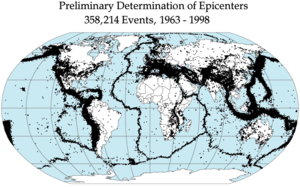 The term pollution refers to the act of contaminating ones environment by introducing certain hazardous contaminants that disturb the ecosystem and directly or indirectly affect the living organisms of that ecosystem. Pollution in general is the activity of disturbing the natural system and balance of an environment.
The term pollution refers to the act of contaminating ones environment by introducing certain hazardous contaminants that disturb the ecosystem and directly or indirectly affect the living organisms of that ecosystem. Pollution in general is the activity of disturbing the natural system and balance of an environment.The increase in the pollution over the years by man has caused severe damage to the earth’s ecosystem. It is responsible for global warming which is leading to the end if all the lives on earth. Over the years there is an extreme increase in the rate of human diseases, and death rate of various animals and plants on earth, and that is all because of the pollution caused by man himself.
There are many types of pollution, but four of them have the most perilous affect on our lives. Following are the four most dangerous types of pollution and their causes:
 |
Types of Pollution |
 Air pollution is perhaps the most common and the most dangerous type of pollution. It involves the direct release of chemicals into the
Air pollution is perhaps the most common and the most dangerous type of pollution. It involves the direct release of chemicals into theenvironment. The chemicals then become the part of the air around us that all the living things take in. The increase in the rate of diseases such as asthma and lung cancer today is due to the increase in the air pollution around us.
Air pollution is also a cause of global warming and acid rain.
Causes Of Air Pollution
Basically the air pollution is caused by the burning of fuel that directly releases hazardous chemicals into the air. For example the burning of coal releases sulphur dioxide, a poisonous gas which is responsible for acid rain. The sources of such chemicals are the large factories, smoke from the vehicles, chimneys and burning of wood. Threat To Polar Animals Due To Global Warming The effects of global warming are playing havoc everywhere higher temperatures, hurricanes, heavy rains, flooding and droughts have now become more frequent and severe in intensity.
 Soil Pollution
Soil PollutionSoil pollution involves the contamination of soil by the release of harmful substances into the soil. Unlike air pollution, which has a direct affect on human lives, soil pollution causes an indirect
damage to humans and other animals.
The lives of all the living things depend on three sources: water, light and soil. The plants which are the producers of the food chain take up their nutrients, which are essential for their living, from the soil.
 The nutrients taken by the plants are then transferred to the consumers that depend on these plants. Hence a soil consisting of contaminants will not only affect the plants growing on the soil
The nutrients taken by the plants are then transferred to the consumers that depend on these plants. Hence a soil consisting of contaminants will not only affect the plants growing on the soilbut it will also indirectly harm the entire food chain.
Causes Of Soil Pollution
Soil pollution is mainly caused by the release of industrial waste.
This waste is directly incorporated into the soil by large industries and factories. Soil pollution is also caused by human acts as mining and deforestation etc.
Water Pollution
 The 75% of the earth’s surface is covered with water and more that half of the total population of earth’s species resides in water.
The 75% of the earth’s surface is covered with water and more that half of the total population of earth’s species resides in water.Moreover, our life greatly depends on water and life without water is impossible. Water pollution not only affects the fish and animals living
in the water but also affects the whole food chain by also transferring the contaminants to the consumers depending on these animals. Water used from a polluted lake directly contaminates its user.
 Many of the water creatures are on the verge of extinction due to the dramatic increase in the water pollution.
Many of the water creatures are on the verge of extinction due to the dramatic increase in the water pollution.Cause Of Water Pollution
Just like air and soil pollution, water pollution is caused by the direct incorporation of hazardous pollutants. The sources of these pollutants are yet again the large industries
and factories that dispose off their waste in lakes and ponds.
Noise Pollution
Unlike other the above mentioned types of pollution does not involve hazardous chemicals or their incorporation into the environment, rather noise pollution is the increase in the rate of
 noise in the environment.
noise in the environment.Noise is defined as an unpleasant sound that has an adverse effect on the human ear. Noise can be extremely dangerous. And it is all around us. It
penetrates into human mind and controls it.
Too much noise leads to severe psychological illness and badly affects the behavior.
It leads to hypertension, stress, aggression and annoyance. Moreover, it causes depression and forgetfulness.
 Cause Of Noise Pollution
Cause Of Noise PollutionNoise pollution is caused by the moving vehicles, man made machines and loud music. Other than that noise can be caused by anything, but these three sources are the main reasons for the noise pollution around us.



